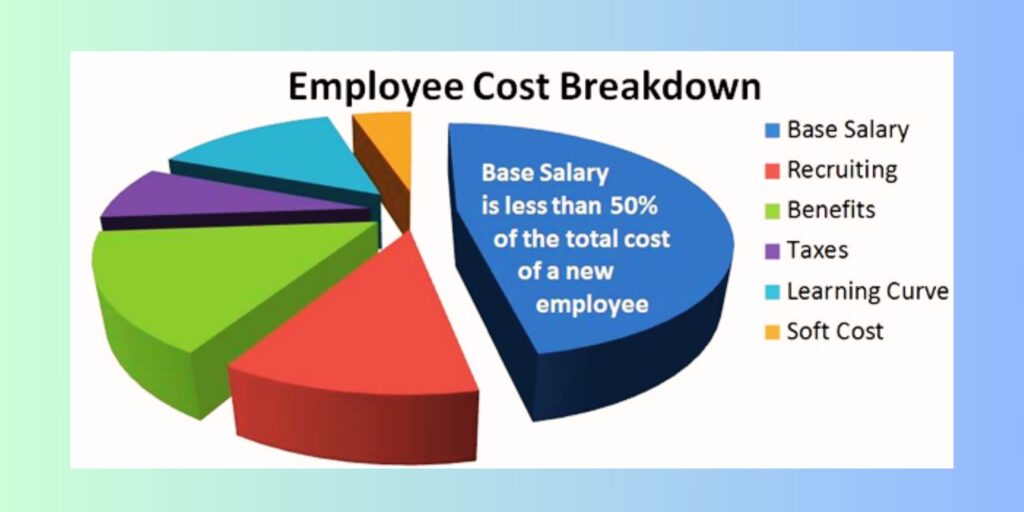 In today’s competitive hiring landscape, understanding and optimizing employee hiring costs is crucial for companies to remain efficient and profitable. From recruiting a new employee to onboarding them, expenses can quickly add up if not properly managed. This article delves into the hidden costs of recruitment, ways to optimize spending, and strategies for cost-effective hiring, all while maintaining the quality of talent acquisition.
In today’s competitive hiring landscape, understanding and optimizing employee hiring costs is crucial for companies to remain efficient and profitable. From recruiting a new employee to onboarding them, expenses can quickly add up if not properly managed. This article delves into the hidden costs of recruitment, ways to optimize spending, and strategies for cost-effective hiring, all while maintaining the quality of talent acquisition.
Understanding Employee Hiring Costs
The Hidden Costs of Recruitment
Recruitment expenses go far beyond salaries. Costs of advertising jobs, time spent on interviewing, and even loss of productivity while a role remains vacant all contribute to the overall expense. The cost of recruiting a new employee also includes background checks, pre-employment assessments, and training once they’ve been hired. Failing to account for these indirect costs can result in a miscalculated hiring budget.
Direct vs. Indirect Hiring Costs
Direct costs include obvious expenses such as recruitment agency fees, job board postings, and referral bonuses. Indirect costs cover productivity losses, but time spent by HR and managers on the hiring process, and the cost of onboarding a new employee. A clear understanding of both is essential for optimizing employee hiring costs.
Breaking Down the Cost Per Hire
Key Metrics to Calculate Cost Per Hire
To optimize recruitment spend, HR teams should focus on calculating the true cost to recruit an employee. This metric involves dividing the total recruitment expenses by the number of hires. Including all recruitment costs—from job postings to final onboarding—provides an accurate picture of how much it costs to hire talent.
Average Cost Per Hire by Industry
The average cost of hiring a new employee can vary greatly depending on the industry. For example, the tech sector generally incurs higher recruiting expenses due to the competitive nature of the market, while retail may have lower costs. Knowing the average cost per hire by industry allows companies to benchmark and manage their spending accordingly.
Reducing Turnover to Cut Hiring Costs
The Impact of Employee Retention on Hiring Expenses
Reducing turnover is a surefire way to cut hiring costs. Retaining current employees reduces the need for constant recruitment and the associated expenses. High turnover leads to more frequent hires, increasing the cost of hiring a new employee. Employee retention programs and strategies aimed at boosting engagement can significantly lower these expenses.
Strategies to Improve Retention and Minimize Turnover
Investing in retention programs, career development opportunities, and employee engagement can have a long-term impact on reducing hiring costs. By retaining employees, companies can reduce the continuous cycle of recruiting and onboarding new talent, directly impacting their bottom line.
Leveraging Technology to Lower Hiring Costs
How AI and Automation Reduce Recruitment Spending
With the introduction of AI in recruitment, companies can automate many time-consuming aspects of hiring, such as resume screening and scheduling interviews. This reduces both time-to-hire and associated costs. In fact, automating these tasks can significantly reduce overall recruitment expenses.
Applicant Tracking Systems (ATS) and Cost Efficiency
Using employee recruitment software like Applicant Tracking Systems (ATS) can streamline processes, reduce manual labor, and ultimately lower the cost of recruiting a new employee. ATS helps manage applications, track candidates, and automate communications, improving efficiency at each stage of the hiring process.
Optimizing Your Recruitment Channels
Evaluating the ROI of Job Boards, Social Media, and Referrals
Not all recruitment channels are equal in cost or effectiveness. Job boards may be an affordable option, but social media and employee referrals often provide better-quality candidates at a lower overall cost. Evaluating the return on investment (ROI) of each recruitment channel can help HR teams make data-driven decisions that lower employee hiring costs.
Balancing In-House vs. External Recruitment Costs
Some companies prefer to manage recruitment internally, while others opt for external agencies. Balancing the cost and benefits of each approach is critical. Internal recruitment may appear cheaper, but factoring in the time and resources needed often makes external recruitment agencies a more cost-effective option in the long run.
Improving Candidate Quality to Save Money
Screening Techniques to Ensure the Right Fit
One of the best ways to reduce hiring costs is to get it right the first time. Investing in proper screening techniques ensures that candidates are a good fit from the start, reducing the likelihood of turnover and repeated hiring costs.
The Cost-Effectiveness of Predictive Hiring Tools
Predictive hiring tools, powered by data analytics, assess candidate compatibility with company culture and job requirements. Using these tools, HR teams can make better hiring decisions, improving retention rates and cutting the overall cost of onboarding a new employee.
Outsourcing Recruitment: Is It Worth the Investment?
Pros and Cons of Outsourcing vs. Internal Hiring
Outsourcing recruitment can be a smart strategy for companies looking to scale their hiring process without straining internal resources. However, it’s essential to weigh the costs. While external agencies might come with fees, their expertise and access to talent pools can lead to better hires and lower long-term recruitment costs.
Reducing Long-Term Costs with RPO (Recruitment Process Outsourcing)
Recruitment Process Outsourcing (RPO) allows companies to delegate all or part of their hiring needs to specialized firms, optimizing processes and saving money in the long term. By improving time-to-hire and candidate quality, RPO providers can substantially lower the cost of hiring a new employee.
Streamlining the Interview and Selection Process
How to Shorten the Time-to-Hire Without Compromising Quality
A long hiring process can be expensive. Streamlining interviews and reducing the time-to-hire is crucial for managing employee hiring costs. Companies that implement structured interview processes and timely feedback loops can reduce hiring cycles without compromising candidate quality.
The Financial Impact of Extended Hiring Cycles
Prolonged hiring cycles lead to increased costs, including higher operational expenses due to vacant roles. Shortening these cycles through efficient recruitment techniques saves money while still ensuring the right candidates are selected.
Employer Branding: A Cost-Effective Recruitment Strategy
How Strong Employer Branding Lowers Hiring Costs
A strong employer brand not only attracts better candidates but also lowers recruitment costs. When a company is known as a desirable place to work, it spends less on recruitment advertising and still attracts top talent. Employer branding can serve as a long-term strategy to optimize employee hiring costs.
The Role of Employee Advocacy in Reducing Recruitment Spend
Encouraging current employees to advocate for your company can lower recruitment costs. Employee referrals often produce high-quality candidates, and this organic form of recruitment is significantly cheaper than traditional methods.
Measuring and Analyzing Recruitment ROI
Key Metrics to Track for Recruitment Cost Optimization
Tracking recruitment metrics such as time-to-hire, cost-per-hire, and retention rates is essential for continuously improving and optimizing employee hiring costs. Regular analysis of these key performance indicators (KPIs) helps businesses refine their recruitment strategies and reduce expenses over time.
How to Continuously Improve Recruitment Efficiency
By consistently measuring recruitment effectiveness and adjusting strategies based on data, companies can optimize their hiring processes and lower costs. Incorporating technology, streamlining interviews, and leveraging internal resources can lead to continuous improvement in hiring efficiency.
Long-Term Strategies for Sustainable Recruitment Spending
Investing in Employee Development to Reduce Future Hiring Needs
By investing in current employees through training and development, companies can reduce their need for future hires. This not only lowers recruitment costs but also builds a more engaged and loyal workforce.
Workforce Planning for Cost-Effective Recruitment in the Future
Effective workforce planning helps businesses anticipate hiring needs and allocate resources accordingly. Long-term strategies such as forecasting talent needs and proactively developing internal talent pipelines reduce the overall cost to recruit an employee.
Conclusion
Optimizing employee hiring costs is essential for maintaining a cost-effective recruitment strategy. From leveraging technology and predictive hiring tools to improving employer branding and retention efforts, there are numerous ways to reduce hiring expenses while still attracting top talent. By continuously analyzing recruitment metrics and adopting long-term strategies, companies can significantly improve their recruitment efficiency and reduce costs. For more insights and solutions tailored to your hiring needs, explore relevant offerings at themsigroup.com.
